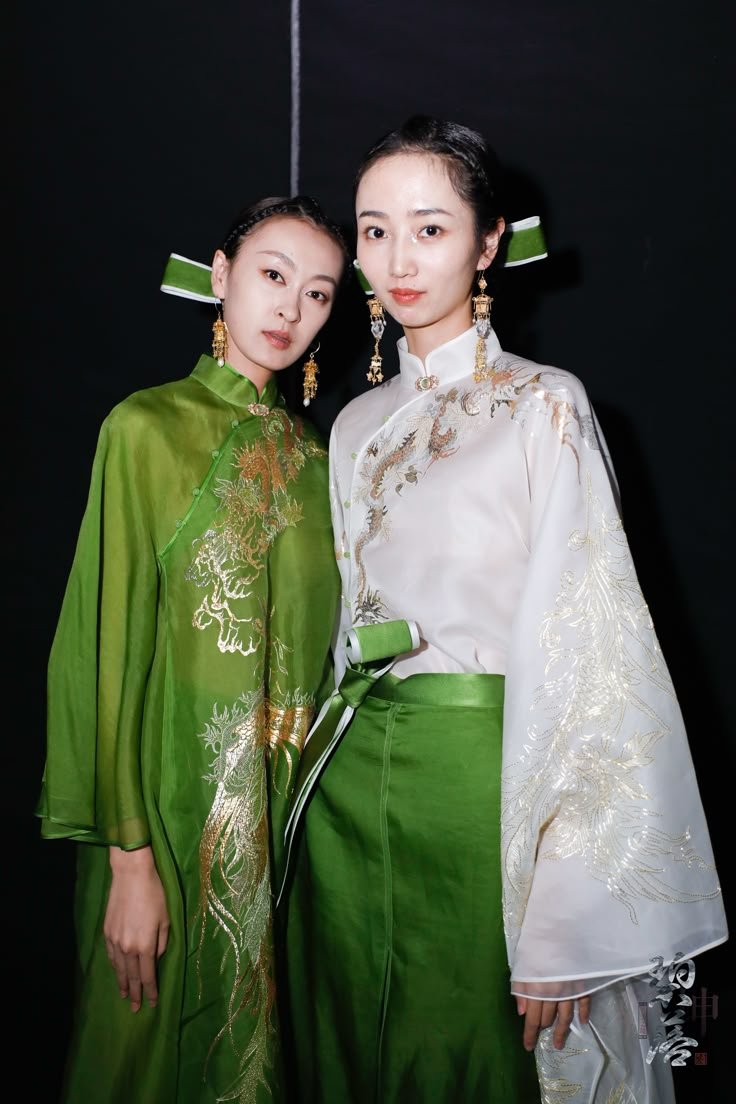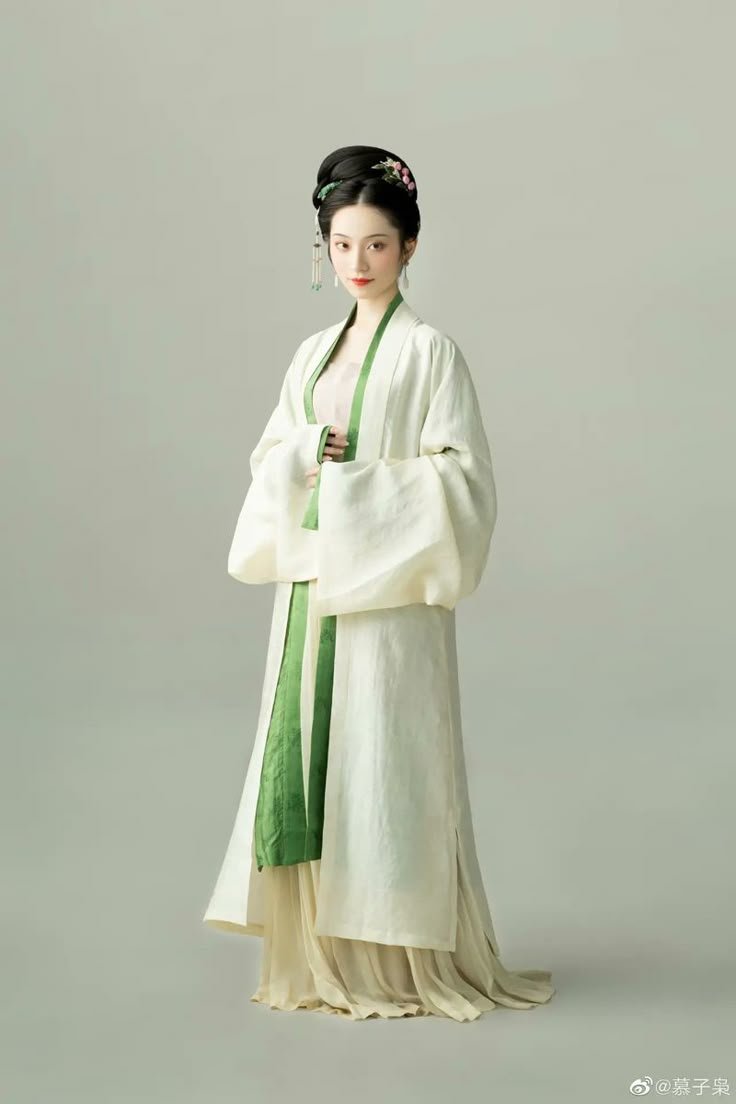Asian fashion continues to dominate the global stage, setting trends that captivate audiences and designers alike. In 2025, the spotlight on Asia’s eclectic aesthetics is brighter than ever, with bold innovations and cultural imprints influencing fashion weeks around the globe. Below, we explore the most notable Asian fashion trends transforming runways worldwide.
1. Modern Hanfu Revival
The traditional Hanfu, once confined to cultural events, has been reimagined with modern twists. Designers are incorporating subtle tailoring, luxurious fabrics, and muted color palettes to merge its timeless elegance with contemporary wearability. The result? Hanfu-inspired collections that blend history with forward-thinking design, turning these garments into staple pieces for both everyday and haute couture.
Key Characteristics:
- Flowing silks paired with clean, minimalist cuts.
- Modern reinterpretations of ancient Chinese embroidery.
- Integration of streetwear elements, such as sneakers and oversize outerwear.
2. Korean Minimalism
South Korea continues to be a global hub for sleek and refined fashion. Korean minimalism thrives on wearable pieces with sharp silhouettes, neutral tones, and subtle embellishments. This aesthetic has gained traction among international designers looking to capitalize on everyday functionality combined with understated elegance.
Trending Pieces:
- Oversized blazers with structured shoulders.
- Tailored wide-leg trousers in monochrome shades.
- Layered basics such as turtlenecks under sleeveless jackets.
3. Japanese Avant-Garde
Japan remains a powerhouse in the avant-garde fashion scene. Designers like Rei Kawakubo and Yohji Yamamoto have long defined this aesthetic, and their influence carries into 2025, with bold experimental designs continuing to challenge traditional norms.
Features to Watch:
- Asymmetric cuts and unorthodox tailoring.
- Dark color palettes contrasted with pops of neon.
- Sculptural garments that blur the lines between art and fashion.
4. Sustainable Textiles from India
India’s focus on sustainability has led to an explosion of eco-conscious fashion trends. Handwoven fabrics, organic dyes, and zero-waste production take center stage in collections inspired by centuries-old practices. Designers are promoting materials such as khadi and organic cotton, bringing a fresh take to artisanal craftsmanship.
Key Developments:
- Growth of biodegradable fabric innovations.
- Revival of heritage embroidery techniques, such as kantha and chikankari.
- Blending ethical production with global outreach.
5. Bold Prints in Southeast Asia
Vibrant patterns and intricate designs define much of Southeast Asian-inspired fashion in 2025. Countries like Indonesia, Thailand, and Vietnam are asserting their presence on global runways through the heavy use of batik, ikat, and other traditional prints interpreted in innovative ways.
Trending Patterns:
- Floor-length gowns adorned with tropical motifs.
- Bold color-blocked batik shirts paired with minimalist pants.
- Monochrome interpretations of ikat patterns for luxury collections.
6. Accessories as Statements
Asian trends in accessories are revolutionizing the way fashionistas complete their looks. Jewelry and footwear are stepping up as key focus points, with standout innovations that draw from traditional techniques.
Emerging Trends:
- South Asian-inspired gold chokers with intricate detailing.
- Japanese geta sandals updated with metallic finishes.
- Handcrafted pouches and totes made from natural weaves.
7. Fusion Streetwear
One of the most exciting 2025 trends is the fusion of streetwear with traditional Asian elements. Think kimono-inspired jackets with a streetwear edge or harem pants paired with oversized sweatshirts. This hybrid aesthetic speaks volumes to a younger, global audience eager for something unique yet relatable.
Popular Styles:
- Hooded jackets with Mandarin collars.
- Graphic tees using calligraphy-inspired artwork.
- Bamboo hats paired with jersey ensembles.
8. Tech-Infused Fashion
Asia is at the forefront of incorporating technology into fashion. Smart textiles, LED-infused designs, and garments that adapt to the wearer’s environment are increasingly featured on runways. Japan and South Korea lead the charge in this field, emphasizing innovation over tradition.
Innovations to Note:
- Weather-responsive outerwear.
- Multi-functional garments with built-in tech for music or fitness tracking.
- LED-accented festival wear.
9. Genderfluid Aesthetics
The blurring of gender norms in fashion is gaining momentum, with Asia’s trailblazing designers leading the charge. Fluid silhouettes, soft tailoring, and a mix of masculine and feminine elements dominate collections, creating inclusive designs that resonate globally.
Hallmarks of Gender-Neutral Fashion:
- Androgynous sets combining skirts and trousers.
- Neutral palettes of beige, gray, and charcoal.
- Unisex accessories like chunky rings and oversized scarves.
10. Cultural Appreciation Over Appropriation
One of the most heartening trends of 2025 is a heightened respect for authenticity. Asian designers are making sure their heritage is reflected and celebrated, with a focus on cultural storytelling rather than borrowed aesthetics. This shift has changed how global audiences appreciate and engage with Asian fashion.
Examples:
- Indigenous textiles showcased with credit to specific artisans.
- Runway narratives telling myths, legends, or historical stories.
- Collections emphasizing ethical production tied to cultural roots.
Final Thoughts
Asian fashion is more than an aesthetic; it’s a testament to innovation, sustainability, and cultural pride. By blending tradition with contemporary design, Asian designers are not only influencing global runways but also reshaping the future of fashion itself. Expect these trends to continue evolving, offering fresh perspectives and groundbreaking styles beyond 2025.



